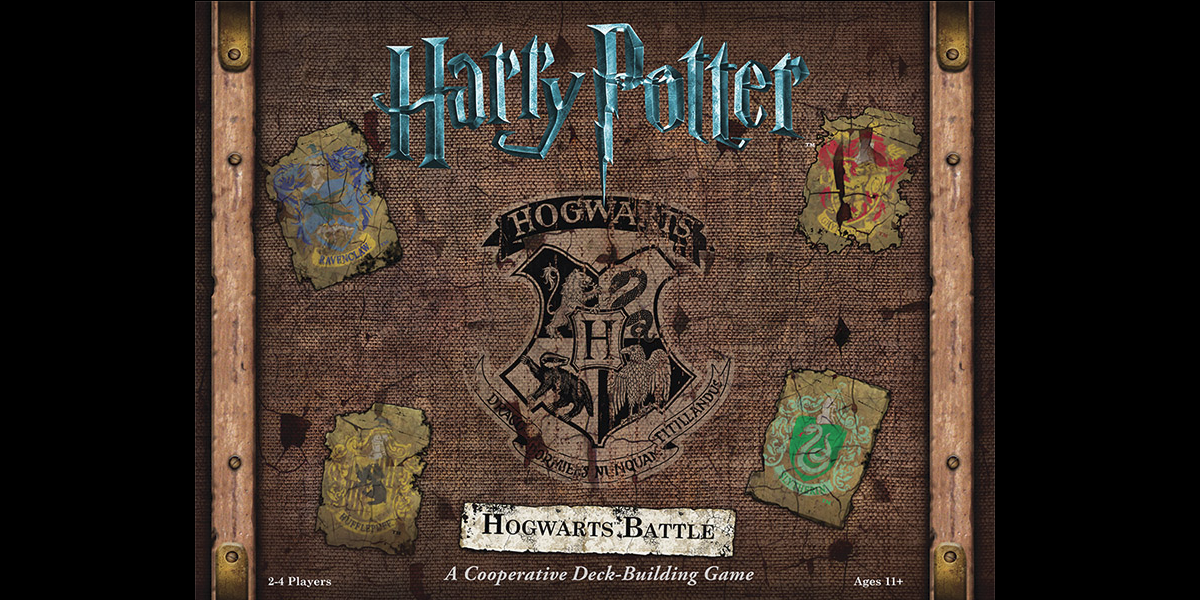Peanut butter and jelly. Bacon and eggs. Rum and Coke. Simon and Garfunkel. Harry Potter and deckbuilding. These are all two great tastes that taste great together, with the latter combination coming together in the form of Harry Potter: Hogwarts Battle, a fun legacy-lite deckbuilding game from USAopoly. While you can't eat it like you can the others, it will still leave you satisfied if you are a fan of deckbuilding games, and especially if you are a fan of the Harry Potter movies. I suppose you can't eat Simon and Garfunkel either or, at least, you shouldn't ... anyway, let me tell you about Harry Potter: Hogwarts Battle, and why you'll probably want to play it rather than eat it.
I'm great at analogies.
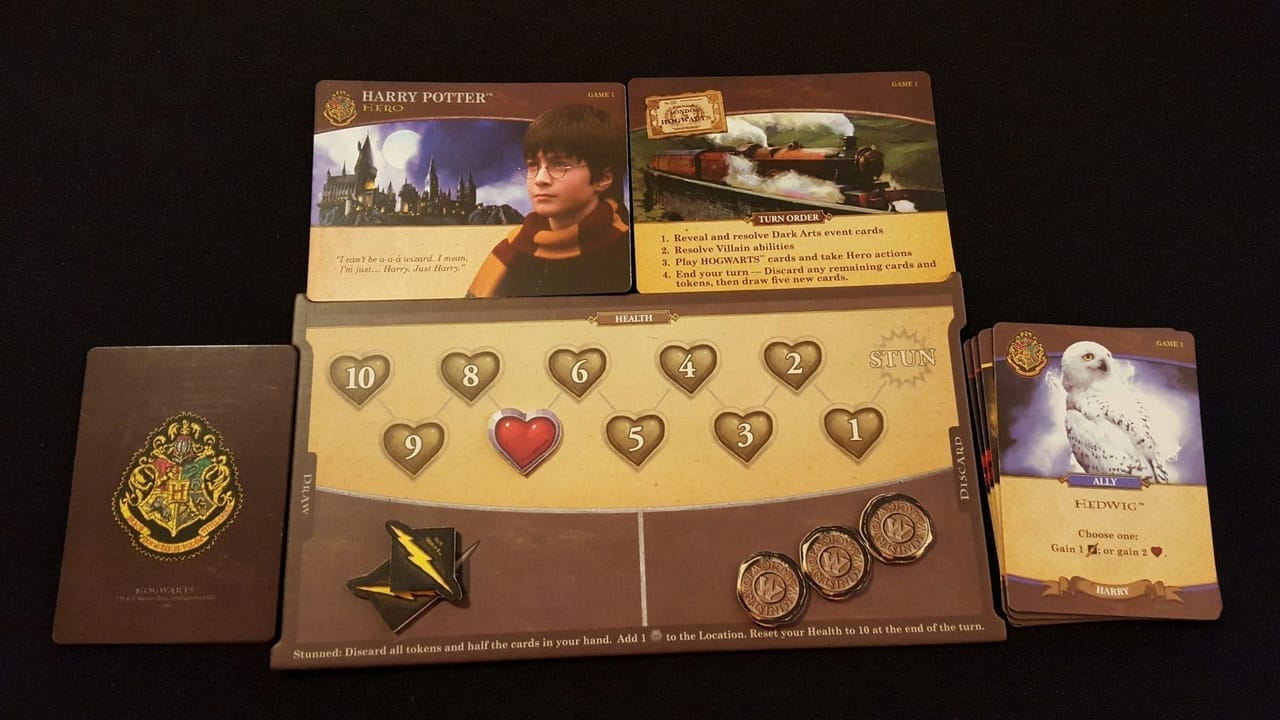
I'm going to (mostly) avoid spoilers in this review, not because I don't want to spoil the story of Harry Potter, but because a big part of the fun in the game is discovering what each new box adds to the experience. This game is actually very light on narrative and expects players to be familiar with the Harry Potter movies to fill in the story-bits. The big reveals come in the form of new cards, new components, and new mechanics that are added with each new box that is opened. There are a few thematic disconnects, such as villains from the first movie that stick around through all of the games, but nothing is cringe-worthy nor do any of those disconnects diminish the fun of the game overall.
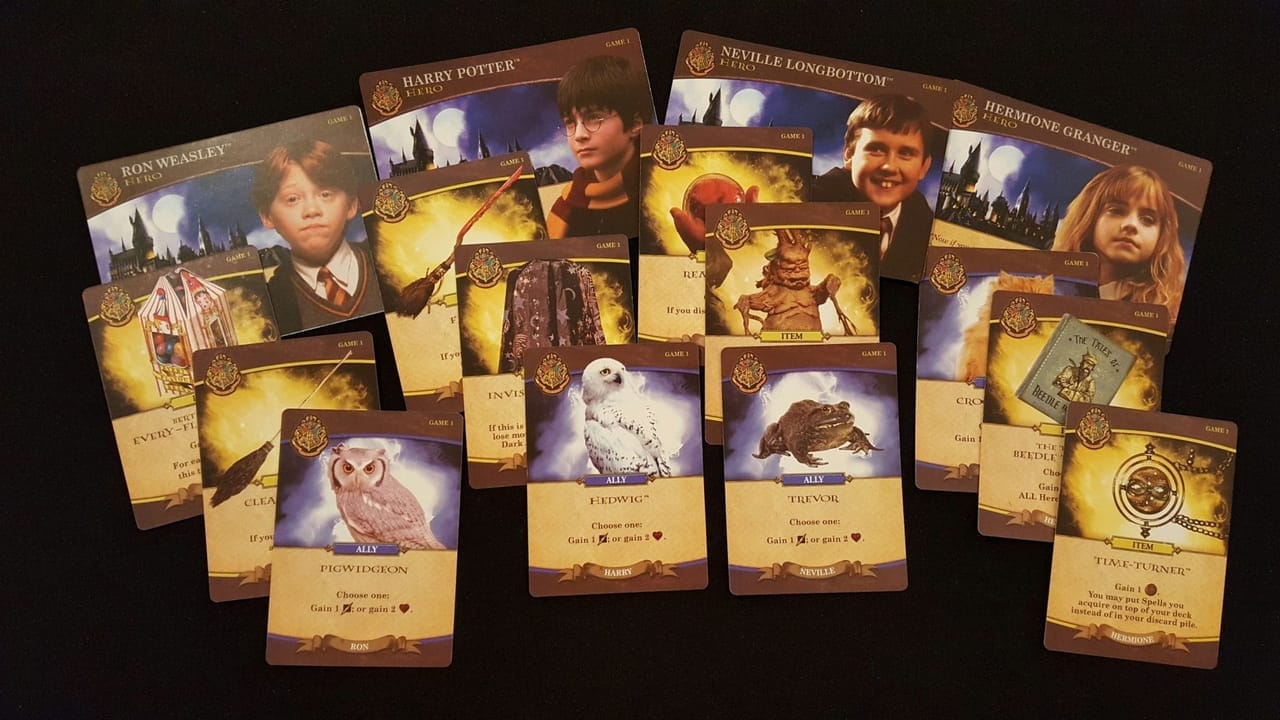
The mechanics themselves, at least to start, are very basic. Each player takes on the role of either Harry, Hermione, Ron, or Neville, each with a starting deck of ten cards. Seven of those ten cards simply give one Influence (the game's currency for purchasing more cards from the Hogwarts deck), while the other three cards are unique to each character and have various effects. Players will need to work together to defeat a few Villains, one at a time, before the Villains can take control over a few well-known locations from the movies. Each turn, a number of Dark Arts cards are drawn (based on the current location) that negatively effect the players or the game in some way, such as damaging the heroes or adding Control Markers to the locations. If a player ever loses all of their health, they are stunned, must discard half of their cards, and must add a Control Marker to the location. The players need to attack and defeat all of the Villains before the Villains take control of all of the locations and can use their Influence to buy cards for their deck to help with that.
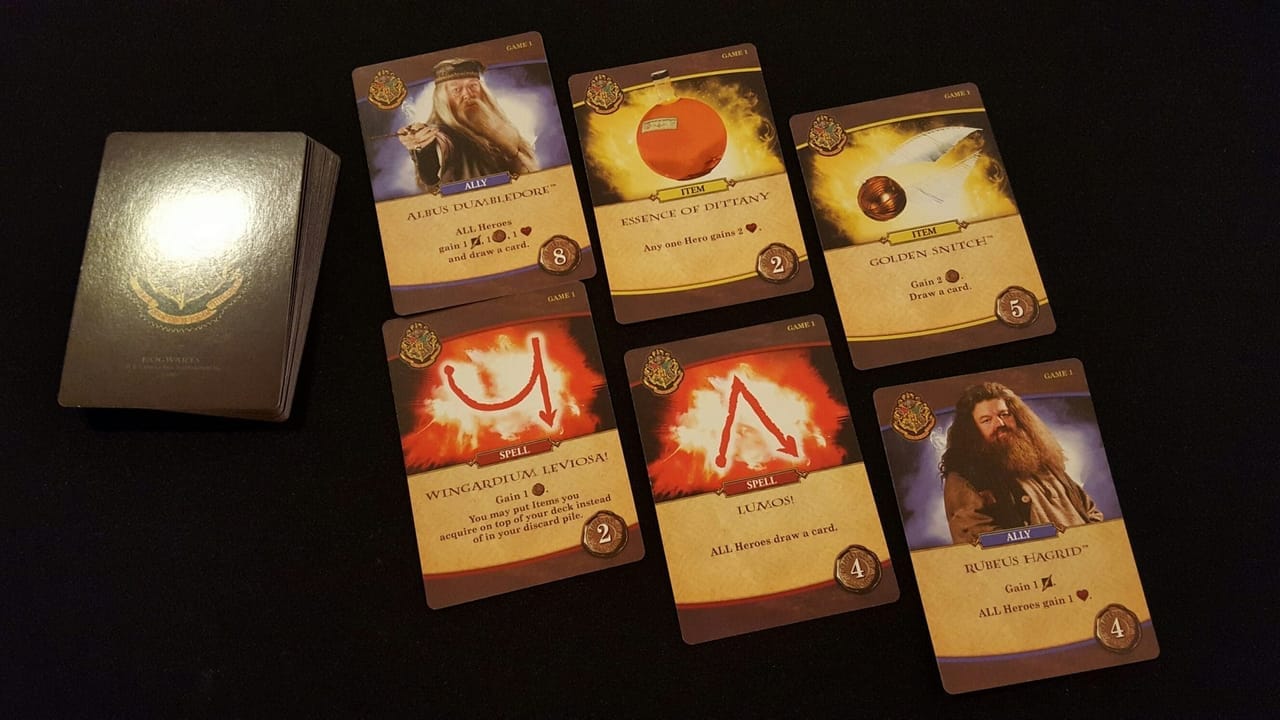
Those core concepts remain constant from the first through the seventh game, although the game changes, evolves, and grows more complex and difficult as each new game is played, and each new box is opened. The boxes/games essentially follow the timeline of the movies, so as each new box is opened, you will see the heroes grow and change, and you will face new challenges based on the movie that matches that box. For the first game, the heroes don't have any special abilities, and the Hogwarts deck is full of fairly basic cards, but as you progress through the story, you will see your characters grow older and become more savvy at dealing with problems, and you will have access to more powerful Hogwarts cards. You will also face deadlier threats, in addition to facing multiple threats at once.
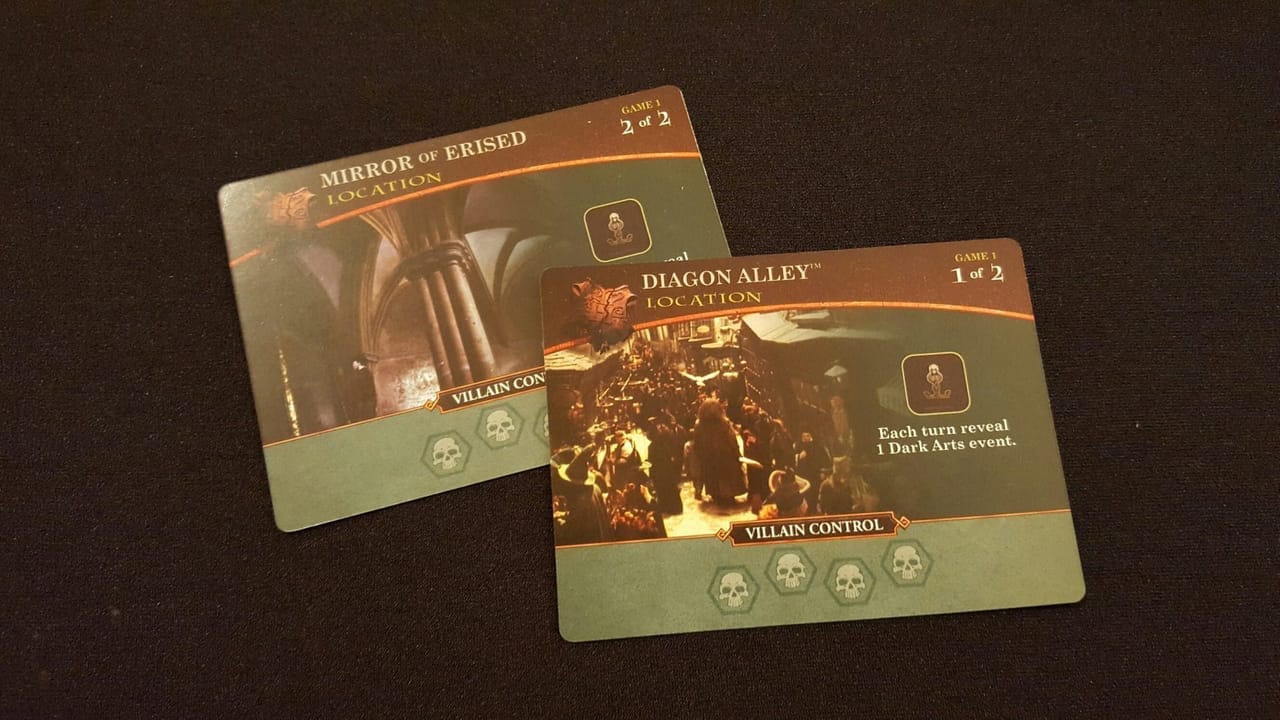
The progression from game to game feels really thematic. When you start out, you are brand new to the wizarding world and your options, and abilities are limited. As you spend more time in Hogwarts year-to-year, you will gain knowledge and skill while your enemies grow deadlier and more cunning. The game recommends that players experienced with deckbuilding immediately jump to game 3, but I would actually recommend against that. Opening a new box after each victory feels like a great reward, and it lends the game an almost legacy feeling. If you aren't familiar with legacy games, they are games that grow and change over time as you play, and permanent changes will take place based on your actions and how the game plays out. Most of those changes are hidden in sealed boxes and envelopes. There aren't any permanent changes in Harry Potter: Hogwarts Battle, but it still has that satisfying and exciting sense of discovery that legacy games offer.
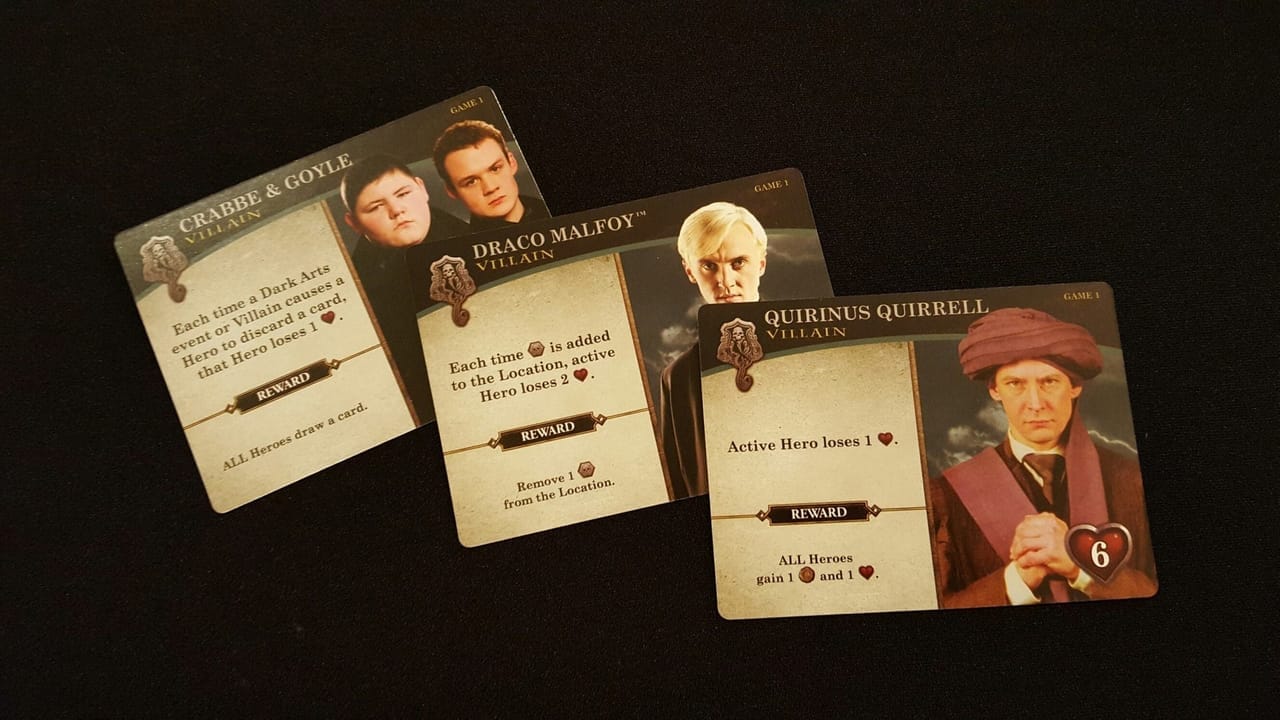
The first three or four games are fairly easy and laid back, but the difficulty really starts to ramp up as you approach games five, six, and seven. Playtime also increases as the game gets more difficult and as you face a larger and larger stack of Villains, but the game also gets more interesting, which balances out the increased play time. Game 7 actually feels like a desperate battle to the end, and while you can coast your way to victory through the first few games, you have to plan, strategize, and coordinate with the other players if you want to win in the final game.
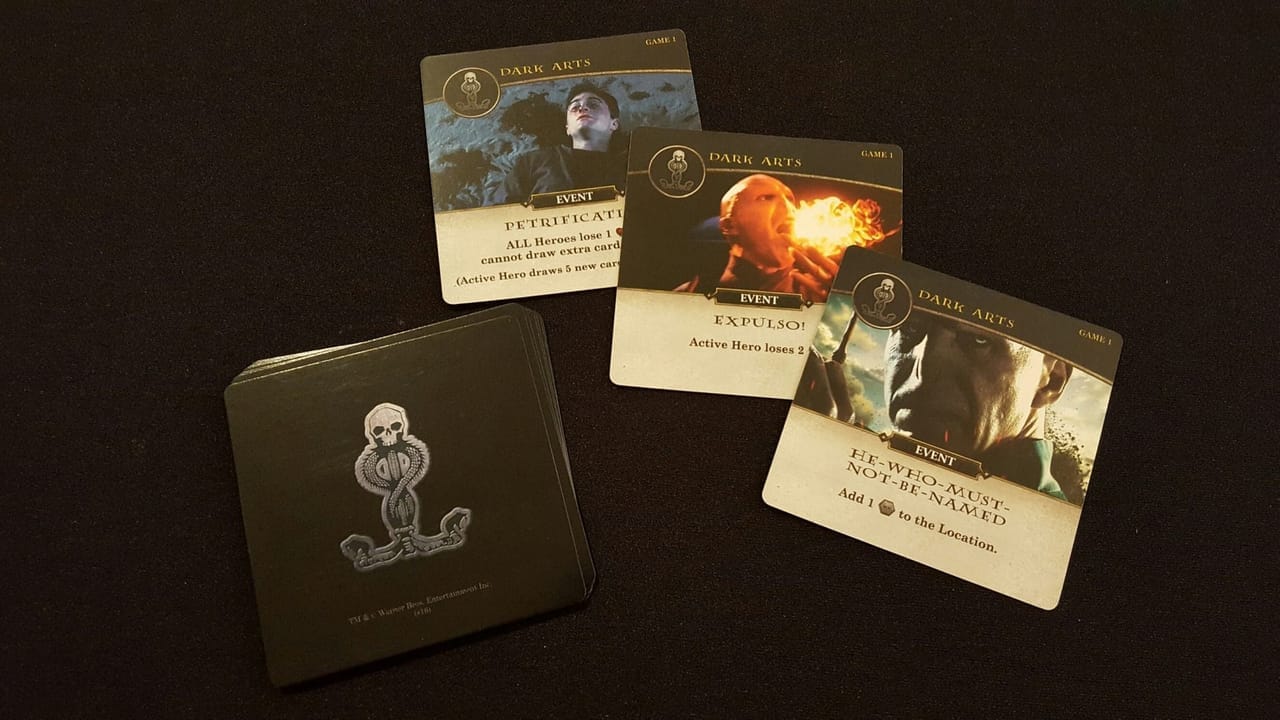
If you are a fan of Harry Potter there is a lot in Hogwarts Battle that will put a smile on your face. If you've never played a deckbuilding game before, then this is a perfect place to get your feet wet. The gradual step up in complexity and difficulty is perfect for new players. If you are a fan of Harry Potter and you are a fan of deckbuilding games then you should grab a copy as soon as you can, because you are going to have a great time with Hogwarts Battle.
THE FOLLOWING PICTURE CONTAINS LATE GAME SPOILERS!!!!!!!!!!!!!!!!!! DON'T LOOK TOO CLOSELY IF YOU WANT TO DISCOVER EVERYTHING YOURSELF!!!!!!!!!!!!!
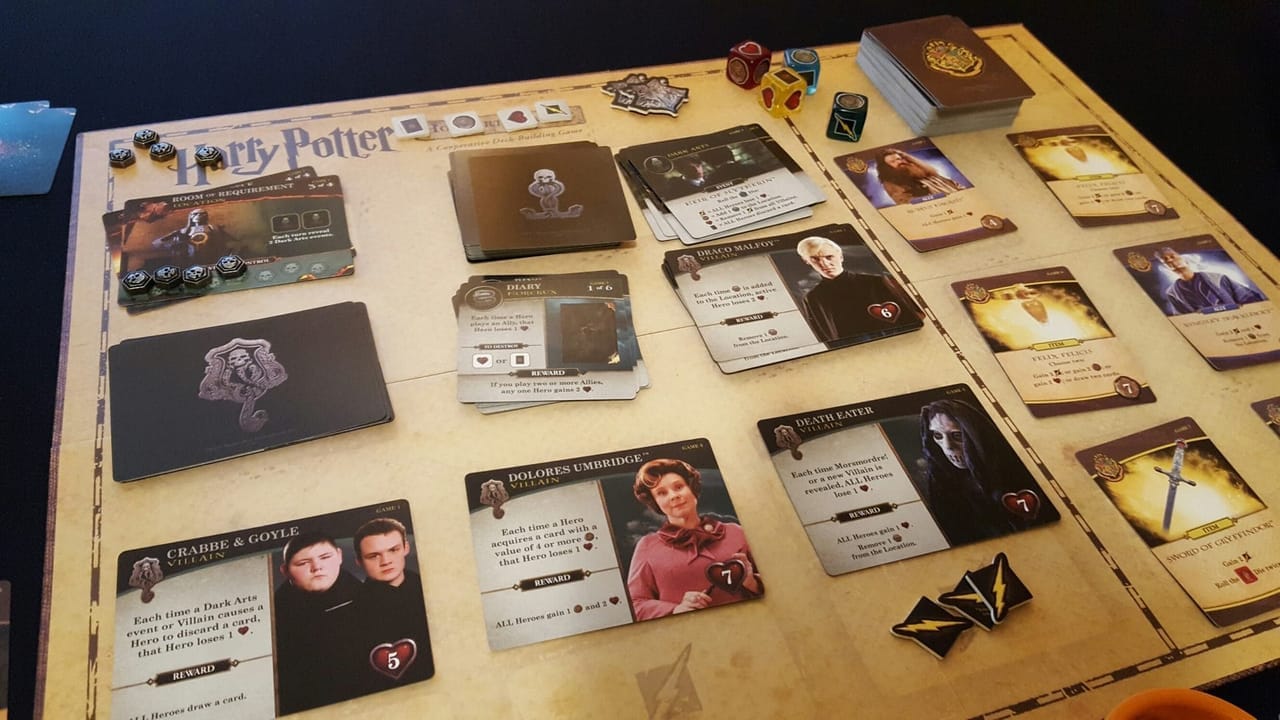
A note on play time: The first few games of Hogwarts Battle take about 45-ish minutes. As you complete missions, and more content and complexity is added, the playtime creeps upwards, clocking in at 90+ minutes, with game 7 scraping the 2 hour mark. Thankfully, the increasing difficulty and added content keep the game interesting even as the play time lengthens.
A note on “chrome”: Harry Potter: Hogwarts Battle is incredibly well produced from top to bottom. As soon as you open the box, which is designed to look like a suitcase, both in and out, including the back of the board that greets you as you lift the lid, you get blasted with theme. Many of the cards use screen-captures from the films, but they fit in perfectly since game is based on the film franchise and, while the spell cards are simple line drawings on a spell-splash background, they still fit in well with the screenshots, and many are sure to put a smile on your face as they tickle your nostalgia-bone. The rules are easy to read and well-structured, and it's incredibly easy to add new cards and components as they are added to the game.
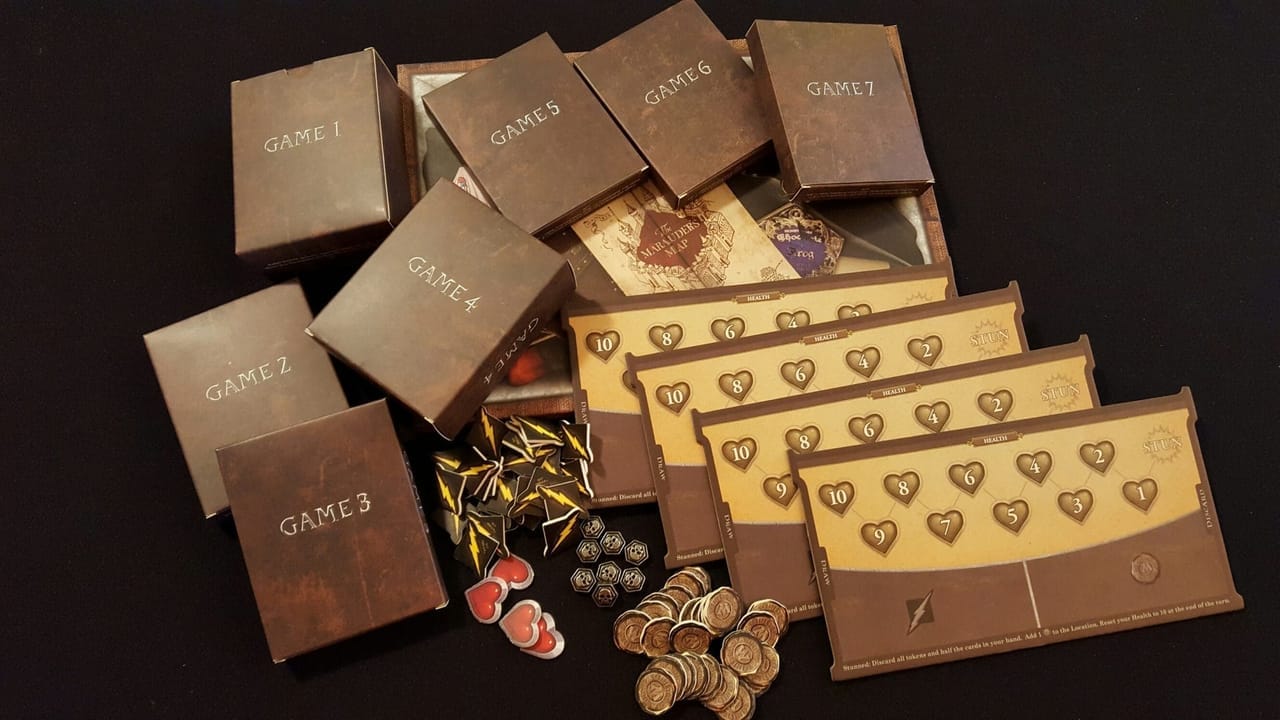
The bottom line:
Harry Potter: Hogwarts Battle is a great cooperative deckbuilding game that evolves over time in such a way that it feels like a light legacy-style game. The first game is incredibly simple, and uses basic deckbuilding mechanics coupled with basic cards that are easy to use. As each game unfolds, more interesting cards, Villains, and mechanics join the fray, and the game evolves into a more difficult and more interesting mid-weight deckbuilder. It's fun to see what kind of goodies each new box will introduce into the game and, even if you only play enough to complete each mission successfully a single time (it took us nine plays total), you will still get a minimum of seven increasingly interesting plays for your money. If you are a fan of the Harry Potter movies, then this is a must have, but even if you are only mildly interested in the theme, the evolving mechanics should keep any fan of deckbuilding and cooperative games interested to the end of game seven.
Get this game if:
You enjoy legacy-style games, but don't want to have to alter or ruin any game components.
You enjoy deckbuilding games.
You enjoy cooperative games.
You are a Harry Potter fan.
Avoid this game if:
You dislike Harry Potter.
You dislike deckbuilding games.
You prefer directly competitive games.
The copy of Harry Potter: Hogwarts Battle used for this review was provided by USAopoly.
Review Summary
Harry Potter: Hogwarts Battle is a great cooperative deckbuilding game that evolves with each new game. It has almost a legacy-light feeling, and is a must have for any fan of deckbuilding games, cooperative games and Harry Potter.
(Review Policy)Have a tip, or want to point out something we missed? Leave a Comment or e-mail us at tips@techraptor.net
